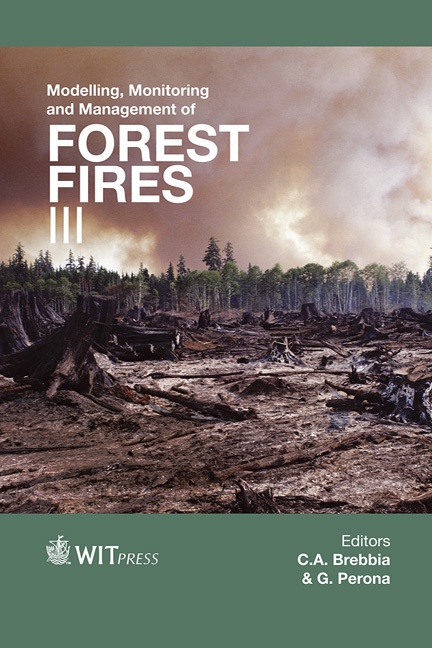Prediction And Modeling Of The Forest Using Neural Networks And Supercomputers
Price
Free (open access)
Transaction
Volume
158
Pages
13
Page Range
51 - 63
Published
2012
Size
401 kb
Paper DOI
10.2495/FIVA120051
Copyright
WIT Press
Author(s)
I. A. Maliy, O. V. Potemkina, I. F. Yasinskiy, F. N. Yasinskiy, S. G. Sidorov, A. S. Mochalov, V. V. Netkachev & L. P. Chernysheva
Abstract
The evaluation of forest fire danger is the actual issue. We see the improving possibility of forest fire danger evaluation. It means the correct definition of places with high probability of ignition occurrence. To solve this problem we developed the new computational scheme, which considers the variety of different factors. The offered method is based on the neural network technology and consists of three main blocks. 1. Block of forest combustible material humidity and soil humidity. It calculates the danger on the base of soil moisture content, averaged humidity of dead wood and forest inflammability according to Nesterov’s criterion. 2. Block of human factor and thunderstorm activity. It considers the closeness of localities, highways, the presence of major hazard and thunderstorm activity. 3. Data base of wildfire hazard categories on the defined area. Forest sites are divided into five categories of wildfire hazard according to the composition of vegetation, topography of the area and its condition. Our research group also established the following developments in the field of forest fires: Mathematical modeling of forest fire distribution (Original equations, the splitting into physical processes, regularization according to the method of Buleev, Scalar sweep, the combination of the computational grid with a geographical map); Electronic forester (device for gathering information about the state of forests, needed to assess the likelihood of fire and fire modeling); The application of supercomputers with graphic accelerators for prediction and Modelling, Monitoring and Management of
Keywords
mathematical modeling, forest fires danger, neural network, supercomputer





